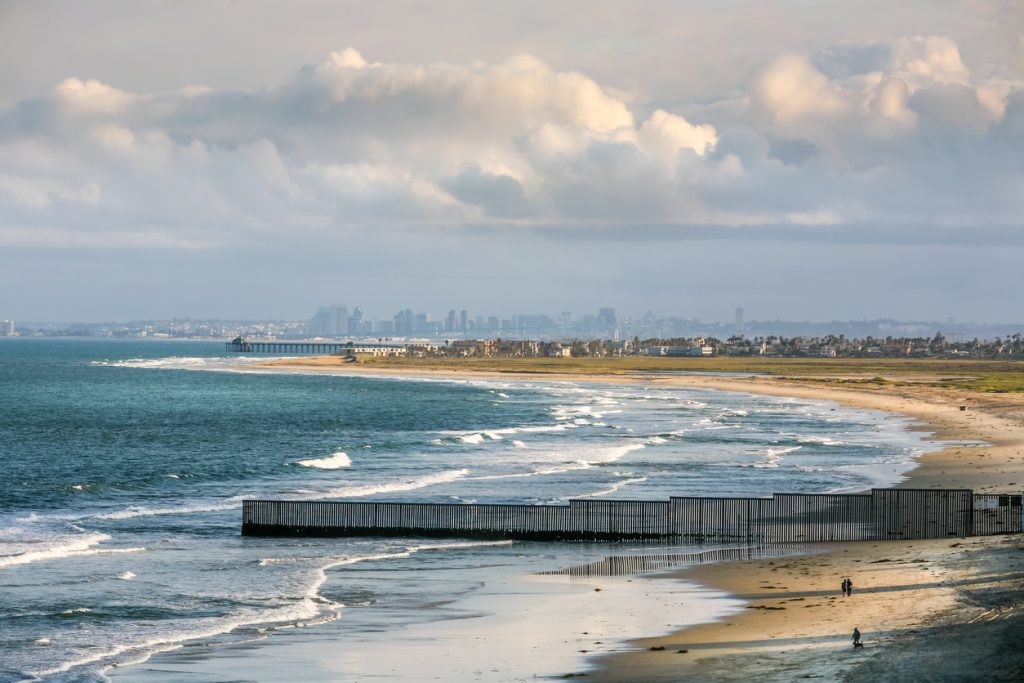
Critical repairs are underway as a part of the large-scale rehabilitation and expansion of the South Bay International Wastewater Treatment Plant. The treatment plant is, in part, to blame for the ongoing Tijuana sewage crisis.
Construction began Sept. 30 to repair the nonfunctioning Junction Box 1 and to install two gates on the eight-foot-wide pipe that carries wastewater from Mexico to the international treatment plant.
The project is expected to cost just under $6 million and be completed by the spring of 2025.
What that means is that, for the first time since 2021, the South Bay International Wastewater Treatment Plant will be able to control its flow of accepted wastewater. For years, increased flow has pushed through the plant’s infrastructure, causing damage and flooding.
The IBWC has been playing a frantic game of repairing one problem at its plant, only to discover another due to deferred maintenance and lack of funding.
At last update, for example, the plant was facing an influx of sediment. The agency repaired one of its primary sedimentation tanks in July, which, once turned on, was quickly overrun and almost immediately broke again. The same happened to another of its tanks, and at last update, only one of five tanks were operating (three should be running at all times; two are redundancies).
Controlling the flow of wastewater to the plant’s current limit of 25 million gallons per day (MGD) will allow for more efficient treatment and ensure that wastewater sent into the Pacific Ocean via the 3.5-mile-long South Bay Ocean Outfall meets federal water quality standards.
The plant is currently out of compliance with its National Pollution Discharge Elimination System (NPDES) permit, a violation of the Clean Water Act. The IBWC was given an Aug. 15, 2024 deadline for compliance by the San Diego Regional Water Quality Control Board, which it missed.
The junction box, while important, is only part of the work planned for the SBIWTP.
Once complete, the entire plant will be repaired and expanded, which will not only repair the plant’s myriad issues, but also, it will double its treatment capacity from 25 MGD to a 50 MGD average flow, with peak flow capacity at 75 MGD.
The expansion, along with other wastewater infrastructure projects both planned and underway on both sides of the border, will eliminate an estimated 90 percent of the untreated sewage that is currently being dumped into the Pacific Ocean.
The IBWC in September awarded a $600 million contract for the repairs and expansion of the plant.
There is not yet a projected completion date, although the project will be designed as it’s built in effort to expedite the process and stop the millions of gallons of raw sewage that are dumped into the Pacific Ocean daily.
The IBWC says it expects for some construction on the plant to begin this year.
“We have been extremely busy making repairs to our plant to meet permit compliance and move forward on expansion plans, thanks to our dedicated employees and the support of the White House, Congress, and many other federal, state, and local stakeholders,” said IBWC Commissioner Maria-Elena Giner, in a statement.
“At the same time,” she added, “we are closely monitoring Mexico’s progress on their wastewater infrastructure improvements to ensure tasks are completed. We are committed to doing everything possible to enhance the health of communities along the U.S.-Mexico border and permit safe entry to the beaches.”
The most recent updates on Mexico’s infrastructure projects related to the sewage crisis can be found here. A more comprehensive list of US projects and their project timelines is here.
“Today’s groundbreaking is the first critical step to expanding [the treatment plant], which will ultimately protect water quality and alleviate the burden on communities along the border that have been impacted by wastewater pollution for too long,” said David Gibson, executive officer of the San Diego Regional Water Quality Control Board, in a statement. “As we celebrate these upcoming repairs to Junction Box 1, it’s important to acknowledge that it will take committed cross-border collaboration and bold, aggressive actions to end decades of pollution.”




